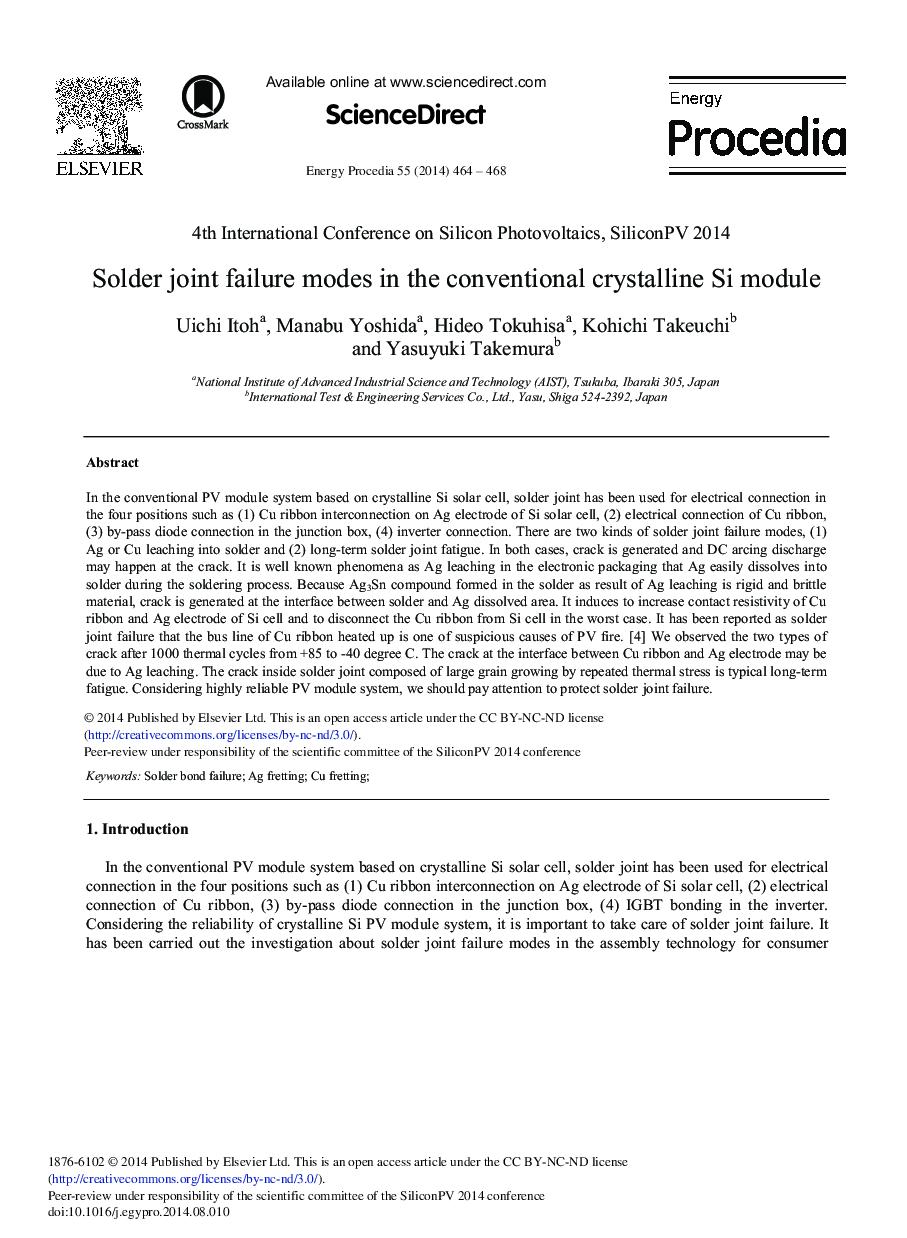| کد مقاله | کد نشریه | سال انتشار | مقاله انگلیسی | نسخه تمام متن |
|---|---|---|---|---|
| 1510967 | 1511180 | 2014 | 5 صفحه PDF | دانلود رایگان |
In the conventional PV module system based on crystalline Si solar cell, solder joint has been used for electrical connection in the four positions such as (1) Cu ribbon interconnection on Ag electrode of Si solar cell, (2) electrical connection of Cu ribbon, (3) by-pass diode connection in the junction box, (4) inverter connection. There are two kinds of solder joint failure modes, (1) Ag or Cu leaching into solder and (2) long-term solder joint fatigue. In both cases, crack is generated and DC arcing discharge may happen at the crack. It is well known phenomena as Ag leaching in the electronic packaging that Ag easily dissolves into solder during the soldering process. Because Ag3Sn compound formed in the solder as result of Ag leaching is rigid and brittle material, crack is generated at the interface between solder and Ag dissolved area. It induces to increase contact resistivity of Cu ribbon and Ag electrode of Si cell and to disconnect the Cu ribbon from Si cell in the worst case. It has been reported as solder joint failure that the bus line of Cu ribbon heated up is one of suspicious causes of PV fire. [4] We observed the two types of crack after 1000 thermal cycles from +85 to -40 degree C. The crack at the interface between Cu ribbon and Ag electrode may be due to Ag leaching. The crack inside solder joint composed of large grain growing by repeated thermal stress is typical long-term fatigue. Considering highly reliable PV module system, we should pay attention to protect solder joint failure.
Journal: Energy Procedia - Volume 55, 2014, Pages 464-468
